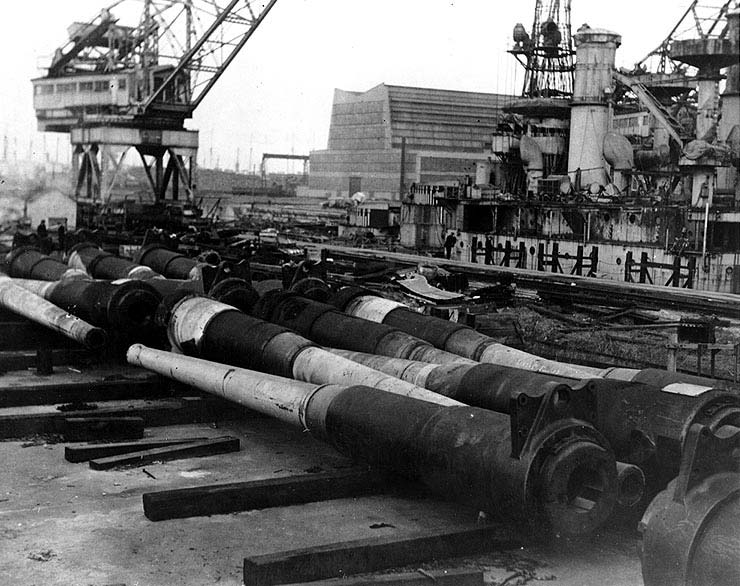World War I had ended. The League of Nations had been formed. The world began the difficult process of picking up the pieces and trying to put them together again, while the three most powerful nations began to ponder how such a conflict could be prevented from ever happening again in the future.
From this scenario came the Washington Naval Treaty.
Pre-Treaty Process
The end of the first global conflict that was large enough to earn the title of a “world war” brought relief, and renewed fear – fear that the most powerful nations on earth could expand their naval forces to such an extent as to render an unfair balance of power that could be used to subdue other nations and cause another world war.
Initiated by U.S. President Harding, the initial pre-treaty negotiations involved three of the most powerful nations in the world at that time: The United States, Great Britain, and Japan. In November of 1921, these nations attended President Harding’s Washington Naval Conference, along with other countries who were a part of the newly-formed League of Nations.
The Perspectives
As is the case with most discussions, each party to the discussions brings a different perspective to the table.
The British perspective involved concern that the United States could expand its naval program and render it capable of subduing the British Royal Navy.
Japan’s perspective shared that of Britain’s concern about the capability of the United States, but they also intended for their interest in Manchuria and Mongolia to be recognized by the League.
The United States’ perspective was concern for the very large and powerful British Royal Navy, along with similar concern about Japan’s possible expansion into the Pacific.
The Negotiations Commence and Progress
As the negotiations began, the United States Secretary of State, Charles Evan Hughs, invoked an intelligence operation to intercept correspondence between the delegates in attendance and their home countries. Particular success was achieved in intercepting and decoding messages between Japan and her delegates, which made it possible for the United States to negotiate more effectively with Japan.
Upon successfully agreeing upon the terms, the world’s first treaty of disarmament was signed in February of 1922: The Washington Naval Treaty.
The Terms of the Treaty
The Washington Naval Treaty established limits on tonnage, expansion, and size of the naval departments of the participating nations. Specifically, the treaty permitted nations to expand with the following limitations:
» United States: 525,000 tons limitation on capital ships, and 135,000 tons on aircraft carriers
» British Empire: 525,000 tons limitation on capital ships, and 135,000 tons on aircraft carriers
» Japan: 315,000 tons limitation on capital ships, and 81,000 tons on aircraft carriers
» France: 175,000 tons limitation on capital ships, and 60,000 tons on aircraft carriers
» Italy: 175,000 tons limitation on capital ships, and 60,000 tons on aircraft carriers
Additional provisions stated that individuals ships must not be in excess of 35,000 tons or be armed with guns larger than 16 inches.
The size of aircraft carriers was also limited to 27,000 tons, with each nation being allowed two such carriers to be larger at 33,000 tons.
In the matter of facilities onshore, it was agreed that the status quo was satisfactory and should be maintained as is. Expansion and/or strengthening of naval bases within territories of small islands was expressly prohibited, while such activity on larger islands would be permitted.
Recognizing that some of the nations’ fleets included ships and carriers that exceeded the maximum terms allowed, the treaty allowed these ships to remain, with the stipulation that as they were replaced, the new ships would comply with the terms of the treaty.
The terms of the treaty were not agreed upon with complete enthusiasm, however. The French delegates expressed concern that the treaty’s terms were unfair, given their large coastal areas along the Atlantic and Mediterranean seas. Finally, upon receipt of a pledge of support from Great Britain, France reluctantly agreed.
Another nation that did not completely embrace the treaty’s terms was Japan, having felt that it was not given the same respect as the Western powers. Yet, it should be noted that the Imperial Japanese Navy only had one ocean to patrol, as opposed to the other powers who had multiple oceans.
The Effects of the Treaty
The Washington Naval Treaty was deemed successful for several years, as construction of naval fleets slowed as member nations worked to develop new ships that complied with the terms of the treaty, yet with sufficient power.
In 1930, this treaty was revised as a part of the London Naval Treaty, and in 1936 a second London Naval Treaty was adopted, with Japan not signing due to its decision to withdraw from the London Naval Treaty in 1934.
These treaties were all rendered null and void in September of 1939 as World War II commenced.
